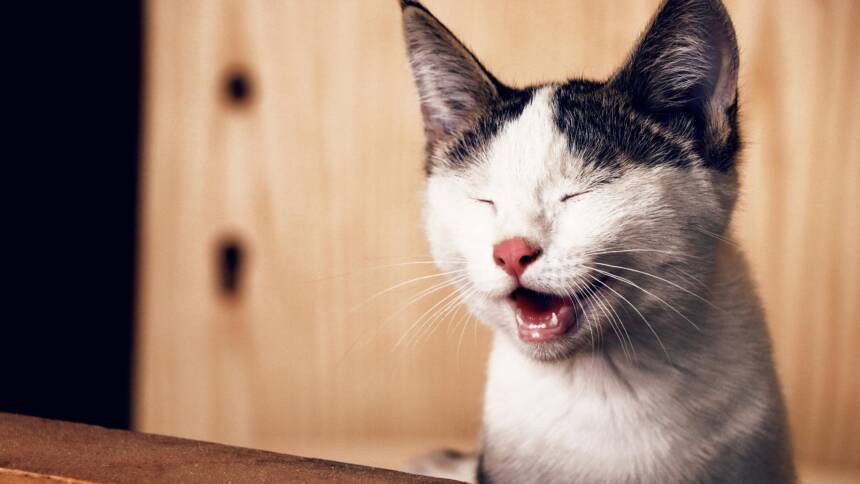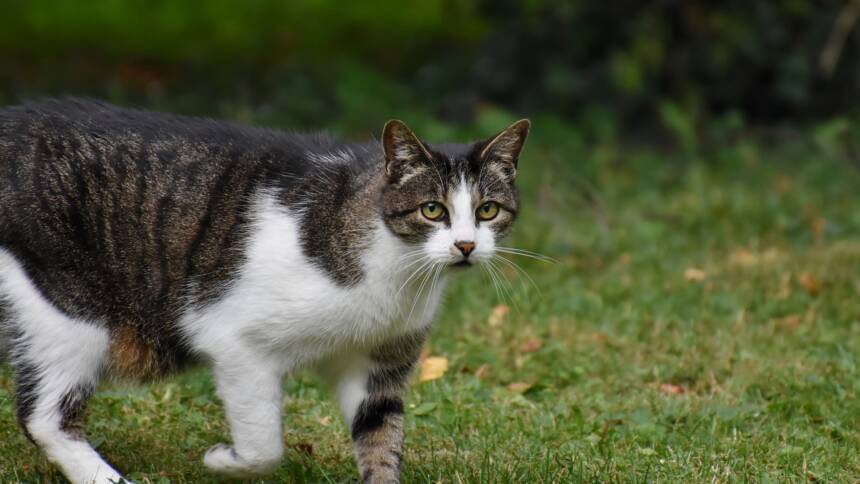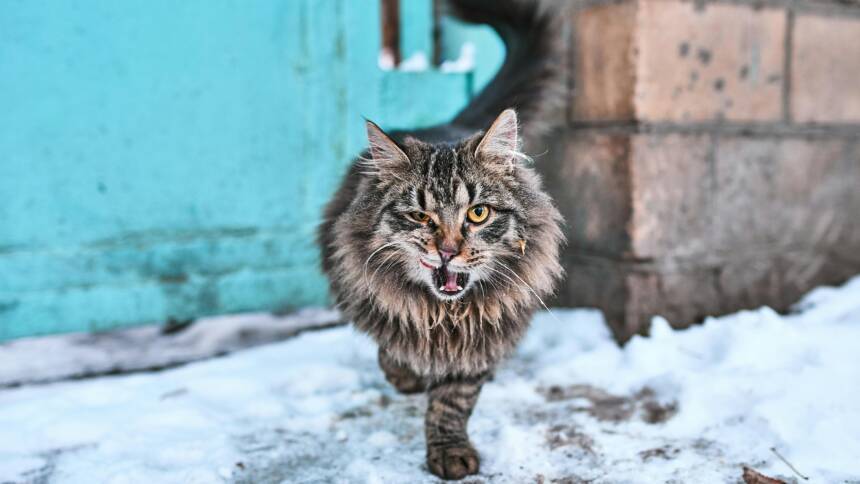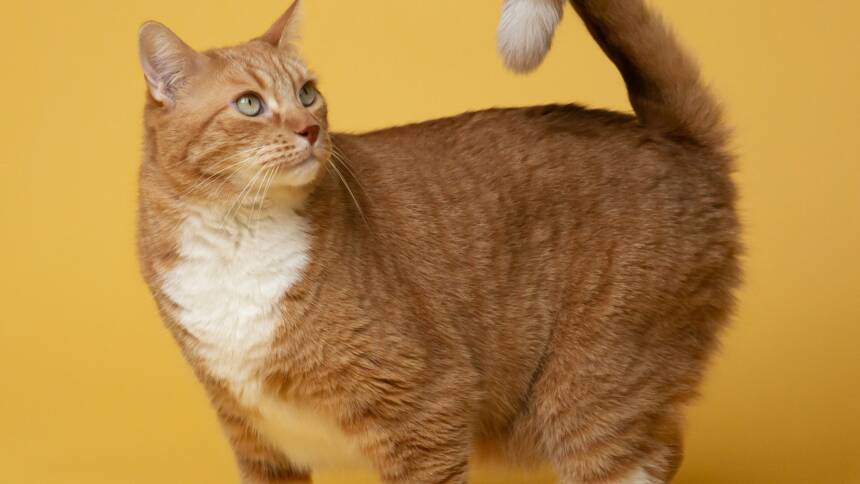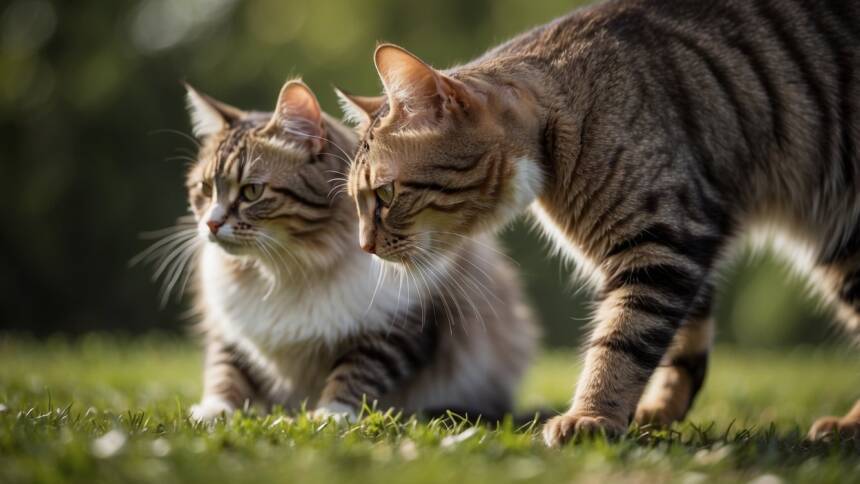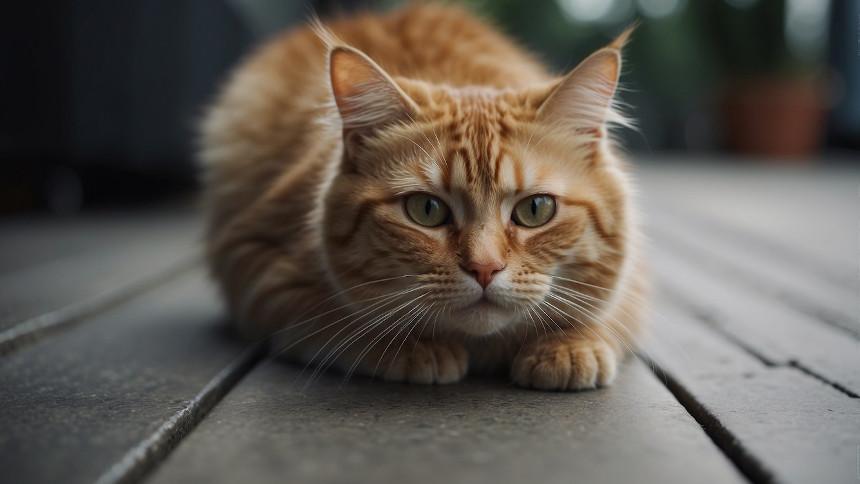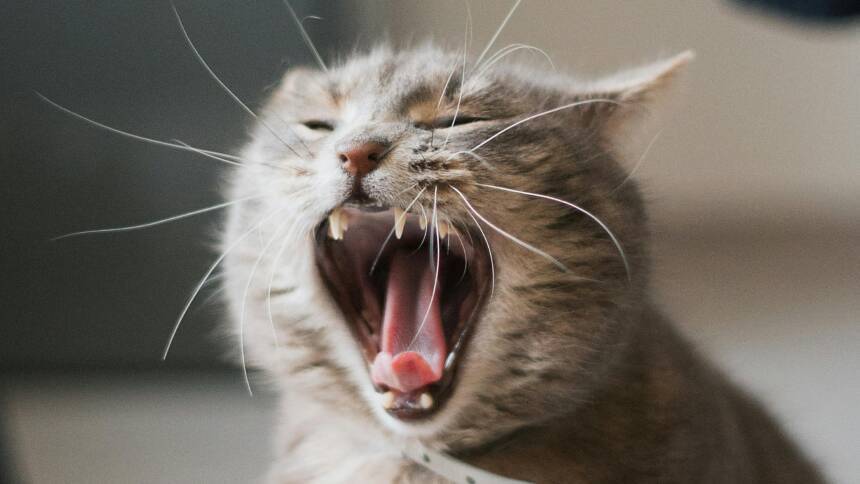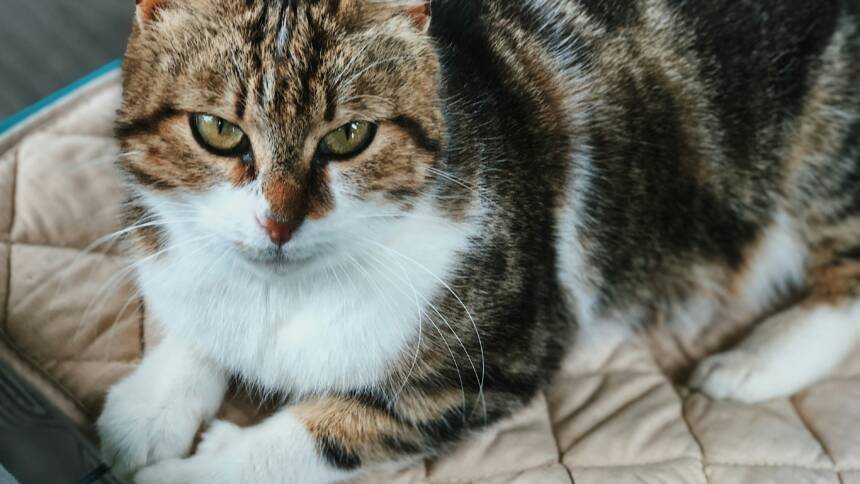When a cat wheezes without producing a hairball, it is understandable for pet owners to express concern. Wheezing can be symptomatic of various underlying health issues, and the lack of a hairball indicates that other factors might be at play. The causes of such wheezing can range from minor irritants to more serious health conditions.
Common causes for a cat’s wheezing without the presence of a hairball include allergies, respiratory infections, foreign objects obstructing the airway, asthma, and even heartworms. Allergies in cats can be triggered by substances such as pollen, dust, cigarette smoke, or certain foods. Foreign objects caught in the throat, respiratory tract diseases, and parasitic infections also pose risks and can lead to wheezing.
It is crucial for cat owners to observe their pet’s behavior and seek veterinary assistance if wheezing occurs. Diagnosing the issue early can prevent further complications. A vet might perform a physical examination, run diagnostic tests, or use imaging techniques to determine the source of the wheezing and the best course of treatment.
Understanding Cat Wheezing
When a cat displays wheezing, it is a sign of underlying respiratory issues. Wheezing is the production of a high-pitched whistling sound when a cat breathes, typically associated with difficulty breathing. This condition can result from several causes that need to be addressed by a veterinarian.
Causes of Wheezing in Cats:
- Asthma: This chronic inflammatory disease leads to swollen airways and can be triggered by allergens such as dust, pollen, or smoke.
- Respiratory infections: Conditions like feline upper respiratory infections can contribute to wheezing with accompanying symptoms such as sneezing or nasal discharge.
- Allergies: Cats can react to various allergens, including household cleaning products, cigarette smoke, and even some food proteins.
Recognizing Breathing Difficulties:
- Rhythmic Wheezing: Noticing a consistent wheeze when a cat inhales and exhales indicates a potential problem.
- Posture: Cats may extend their neck and open their mouth to ease breathing.
- Activity Intolerance: A decrease in activity or hiding could be signs that a cat is struggling to breathe normally.
Owners should monitor their pets for symptoms of breathing difficulties and seek veterinary attention if wheezing is persistent or accompanies other health changes. Prompt diagnosis and treatment are crucial in managing respiratory issues and ensuring a cat’s well-being.
Common Causes of Wheezing in Cats
Wheezing in cats can be symptomatic of various underlying health issues. From respiratory infections to foreign bodies lodged in their airways, understanding the common causes is crucial.
Respiratory Infections
Respiratory infections in cats are often caused by viruses such as feline herpesvirus and feline calicivirus. These viruses lead to inflammation of the airways, causing symptoms like wheezing, coughing, and difficulties in breathing.
Allergic Reactions
Cats can have allergic reactions to a myriad of environmental allergens including dust, pollen, and dust mites. Smoke from cigarettes and even certain foods can act as triggers. These allergies can cause wheezing due to the constriction and inflammation of the respiratory passages.
Parasites and Heartworm Disease
Parasites like lungworms and heartworms can lead to respiratory distress in cats. While heartworm disease is less common in cats than dogs, it can render serious health issues including coughing, gagging, and wheezing.
Foreign Objects and Hairballs
Although not as common, cats can inhale or ingest foreign objects that get stuck in their airway, leading to wheezing and coughing. While hairballs are typically expelled by gagging and retching, they can occasionally cause airway obstruction and subsequent wheezing.
Asthma and Chronic Bronchitis
Feline asthma and chronic bronchitis are chronic conditions characterized by inflamed airways. These conditions can cause persistent wheezing and coughing, which may be mistaken for hairballs. Asthma can be particularly serious, necessitating veterinary attention to manage the symptoms and provide relief.
Symptoms and Diagnosis of Feline Respiratory Issues
Cats experiencing respiratory issues often manifest symptoms such as coughing and wheezing, which require thorough evaluation by a veterinarian for an accurate diagnosis.
Recognizing Symptoms
Cats with respiratory difficulties may exhibit:
- Coughing: A persistent cough without the presence of a hairball.
- Sneezing: Repeated sneezing which could indicate irritation or infection.
- Lethargy: Decreased activity or interest in play, which may be a sign of discomfort or illness.
- Labored Breathing: Difficult or rapid breathing, sometimes with an open mouth.
- Hiding or Lethargic Behavior: Seeking solitude and displaying a lack of responsiveness.
Additional signs might include a recurring cough, wheezing sounds during breathing, or even vomiting. It’s crucial for cat owners to monitor their pets’ behaviors and physical symptoms for any indications of respiratory distress.
Diagnostic Procedures
To diagnose the cause of a cat’s respiratory symptoms, veterinarians typically employ a combination of the following:
- Physical Examination: Checking for signs of respiratory distress, auscultating the lungs, and assessing the cat’s general condition.
- X-rays: Employing x-rays to view the lungs and airways for obstructions, signs of inflammation, or other abnormalities.
- Blood Tests: Analyzing blood samples to rule out infections, allergies, and other systemic conditions.
Through these diagnostic tools, the veterinarian can form a comprehensive understanding of the cat’s health and develop an appropriate treatment plan. It’s imperative that owners seek veterinary assistance if they notice any respiratory issues in their cats to allow prompt and precise intervention.
Medical Treatments and Management
Effective management of cat wheezing not associated with hairballs involves both immediate relief for acute symptoms and developing a long-term treatment plan. Specific treatments will depend on the underlying cause, which a veterinarian should determine.
Medications for Immediate Relief
When a cat presents with wheezing symptoms, veterinarians may administer or prescribe medications to provide immediate respiratory relief. Options include:
- Corticosteroids: These may be given orally or as an injection to reduce inflammation in the airways.
- Bronchodilators: In some cases, an inhaler might be used to help open air passageways and facilitate breathing.
- Oxygen Therapy: In severe cases, where breathing is significantly affected, oxygen therapy may be administered.
Long-Term Treatment Plans
A long-term treatment plan will involve managing the underlying cause of the wheezing:
- Antibiotics: If a bacterial respiratory infection is diagnosed, a cat may be prescribed a course of antibiotics.
- Parasite Control: Effective flea, mite, and worm control to manage parasitic infections that could cause wheezing.
- Heartworm Medication: When heartworms are the cause, appropriate medication under veterinary supervision is essential.
Management may also include weight control and minimizing exposure to allergens or irritants that can contribute to respiratory issues.
Home Care and Environmental Management
Proper home care and environmental management are vital in addressing wheezing in cats when a hairball is not the cause. Owners can take specific steps to minimize exposure to common triggers and assist the cat in maintaining clear airways.
Reducing Exposure to Triggers
Cats can be sensitive to various allergens within their environment. Identifying and diminishing these triggers is crucial for their health.
- Common Triggers:
- Smoke
- Perfumes
- Household cleaners
- Pollen
Actions:
- Keep cats away from smoked areas and refrain from using strong perfumes or aerosols near them.
- Choose pet-friendly household cleaners.
- During high pollen seasons, limit the cat’s outdoor access.
Improving Air Quality
Maintaining clean air within the cat’s environment assists in preventing respiratory issues.
- Methods:
- Use HEPA air filters to reduce airborne allergens.
- Ensure regular replacement or cleaning of air filters.
- Maintain a smoke-free home.
Considerations:
- Cats with a history of respiratory issues may benefit from air humidifiers to keep their airways moist.
Assisting with Grooming
A consistent grooming routine helps manage fur ingestion, which can contribute to respiratory problems in some cases, especially in obese cats as they may struggle with self-grooming.
- Grooming Tips:
- Frequent brushing reduces the amount of loose fur.
- Use grooming tools appropriate for the cat’s coat length.
- Obese cats may require extra assistance with grooming hard-to-reach areas.
Frequency:
- Long-haired breeds may need daily brushing.
- Short-haired breeds may require less frequent grooming sessions.
Complications and Emergency Situations
In certain cases, wheezing in cats can be indicative of underlying health conditions that are severe or even life-threatening. It is crucial to recognize when these symptoms escalate to an emergency requiring immediate veterinary care.
Identifying Severe Cases
Severe cases of wheezing often present with additional symptoms that may include:
- Increased effort to breathe: The cat may display labored breathing or open-mouth breathing.
- Changes in behavior: A cat experiencing discomfort may be lethargic, less interactive, or show signs of distress.
- Blue-tinged gums: This is a sign of oxygen deprivation and requires immediate intervention.
Cats may sometimes be at risk for heart failure, which can present with wheezing or difficulty breathing. It’s important for pet owners to be vigilant and take note of these acute changes.
When to Visit the Veterinarian
A veterinarian should be consulted in the following scenarios:
- Persistent Wheezing: If the cat’s wheezing is recurrent or persistent over several hours.
- Associated Symptoms: Coupled with wheezing, if there are symptoms like coughing, rapid breathing, or fainting.
- Exacerbation of Symptoms: If the wheezing suddenly worsens or is accompanied by a decreased appetite or weight loss.
- Prior Conditions: Cats with a history of respiratory issues or heart disease should see a veterinarian promptly if wheezing begins or escalates.
It is recommended to seek emergency veterinary care if the cat shows signs of severe respiratory distress, as delay in such situations can be life-threatening.
Preventative Measures and Regular Care
Understanding that preventative measures are a cornerstone in maintaining a cat’s health, this section addresses two crucial aspects: regular vet checkups and strategic lifestyle and diet adjustments. These measures aim to mitigate the risks of wheezing not related to hairballs and ensure a cat’s respiratory wellbeing.
Routine Vet Checkups
Regular visits to a veterinarian are paramount for early detection and prevention of respiratory issues that could lead to wheezing. A veterinarian can perform comprehensive health assessments to ensure all aspects of a cat’s health are normal. These checkups can also help identify the onset of conditions such as obesity, which can contribute to respiratory distress. Recommended frequency of these checkups typically increases with a cat’s age or if they have a history of medical problems.
Lifestyle and Diet Adjustments
Managing a cat’s lifestyle and diet can significantly reduce the instances of non-hairball related wheezing.
- Diet: Feeding cats high-quality food tailored to their specific needs can minimize the risk of obesity and associated stress on the respiratory system. A veterinarian can recommend an appropriate diet plan.
- Normal weight maintenance is crucial; avoid sudden weight loss or gain.
- Stress Reduction: A stress-free environment contributes to overall health. Minimize changes to a cat’s environment and routine to prevent stress-induced issues.
- Provide clean, quiet rest areas for the cat.
- Use pheromone diffusers if needed to enhance calmness.
Through these preventative strategies, owners can help safeguard their cats against respiratory ailments that could lead to wheezing unrelated to the expulsion of hairballs.
Understanding Related Feline Diseases
Recognizing the various diseases related to feline respiratory issues is crucial for early detection and treatment. These conditions can range from simple respiratory tract infections to more complex cardiac and pulmonary disorders.
Respiratory Tract Conditions
Respiratory illnesses in cats often manifest with symptoms like wheezing, indicative of an issue within the respiratory tract. Conditions such as feline asthma—a chronic inflammatory condition—and respiratory infections like feline viral rhinotracheitis (FVR) and feline upper respiratory infections (URI) frequently cause these symptoms. The diseases affect a cat’s immune system and can be accompanied by sneezing, coughing, and nasal discharge. Exposure to irritants such as smoke or dust often exacerbates these conditions.
Cardiac and Pulmonary Disorders
Heart disease in cats is a less common, yet a serious cause of wheezing and breathing difficulties. Disorders like heart disease and heart failure can lead to fluid accumulation in the lungs, a condition known as pulmonary edema, affecting lung function. Heartworm, a parasitic infection transmitted by mosquitoes, is another serious ailment that impacts both the heart and lungs, potentially leading to heart failure or severe respiratory complications.
Other Underlying Illnesses
Wheezing can also be a symptom of other underlying illnesses, some of which may be severe. Parasites, such as lungworms, can lead to respiratory distress. Malignancies, including cancer or tumors within the respiratory tract, although less common, should not be overlooked as potential causes. These serious conditions can severely compromise a cat’s immune system and overall health, demanding prompt veterinary attention.
